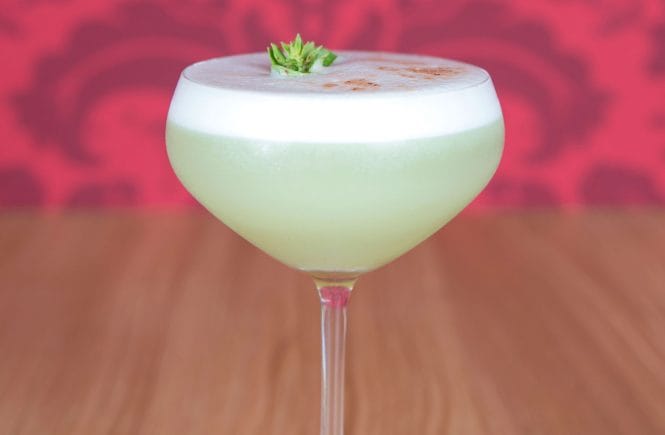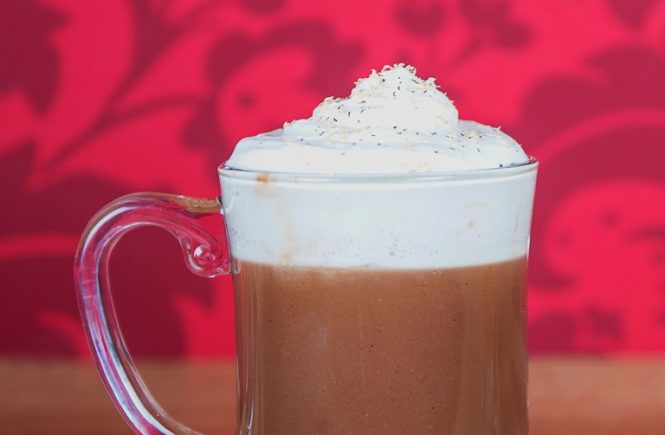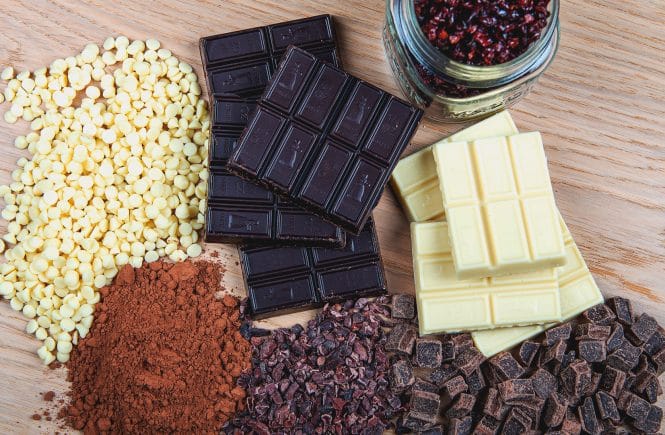Cocktails are better in a barrel—even if you don’t have one
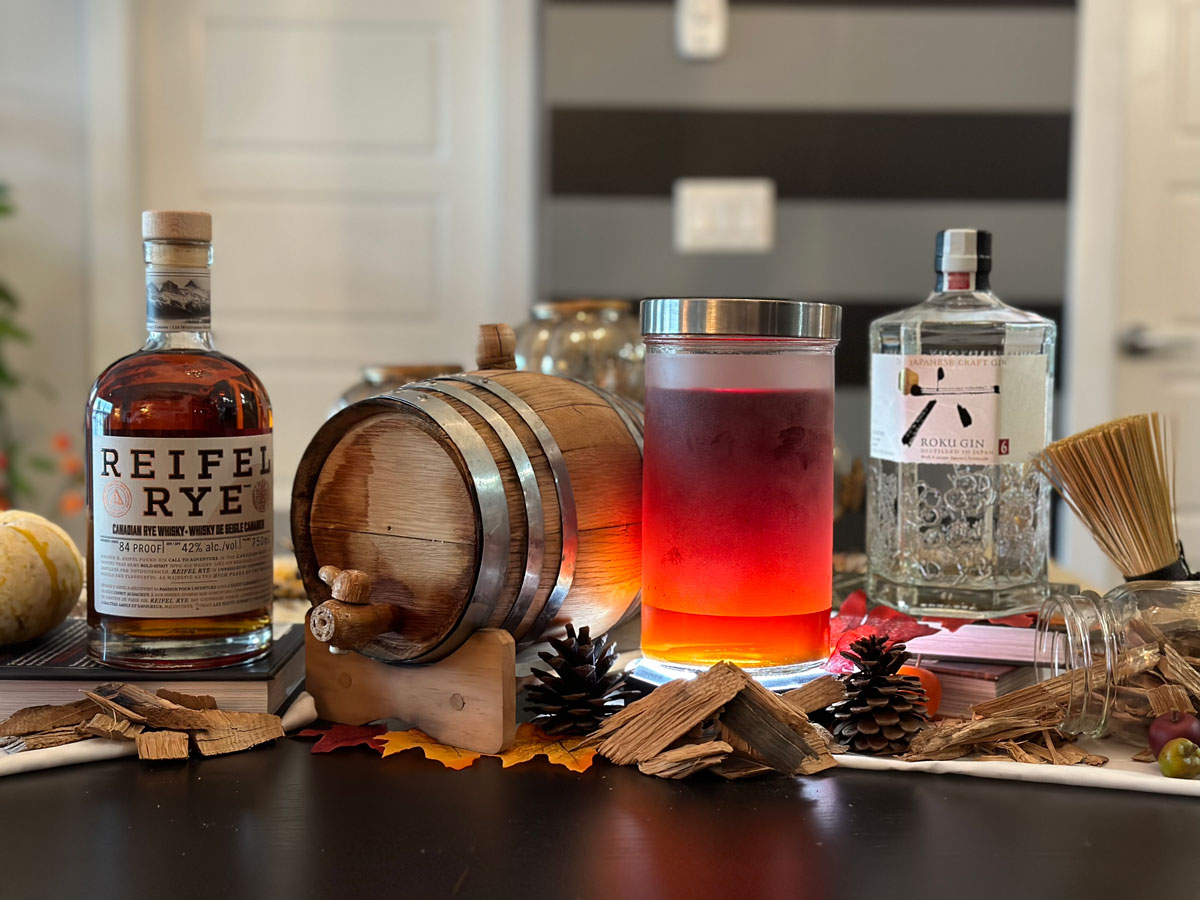
What exactly is barrel aging? Simply put, it’s the interaction between alcohol and the wooden barrels it’s resting in. This process can range from a mere 60 days to years, decades, even centuries. When temperatures rise, spirits absorb deeper into the barrel staves; then they retract out when temperatures cool. This constantly changing interaction affects the spirits by mellowing harsher notes, adding body and giving deeper, richer flavours.
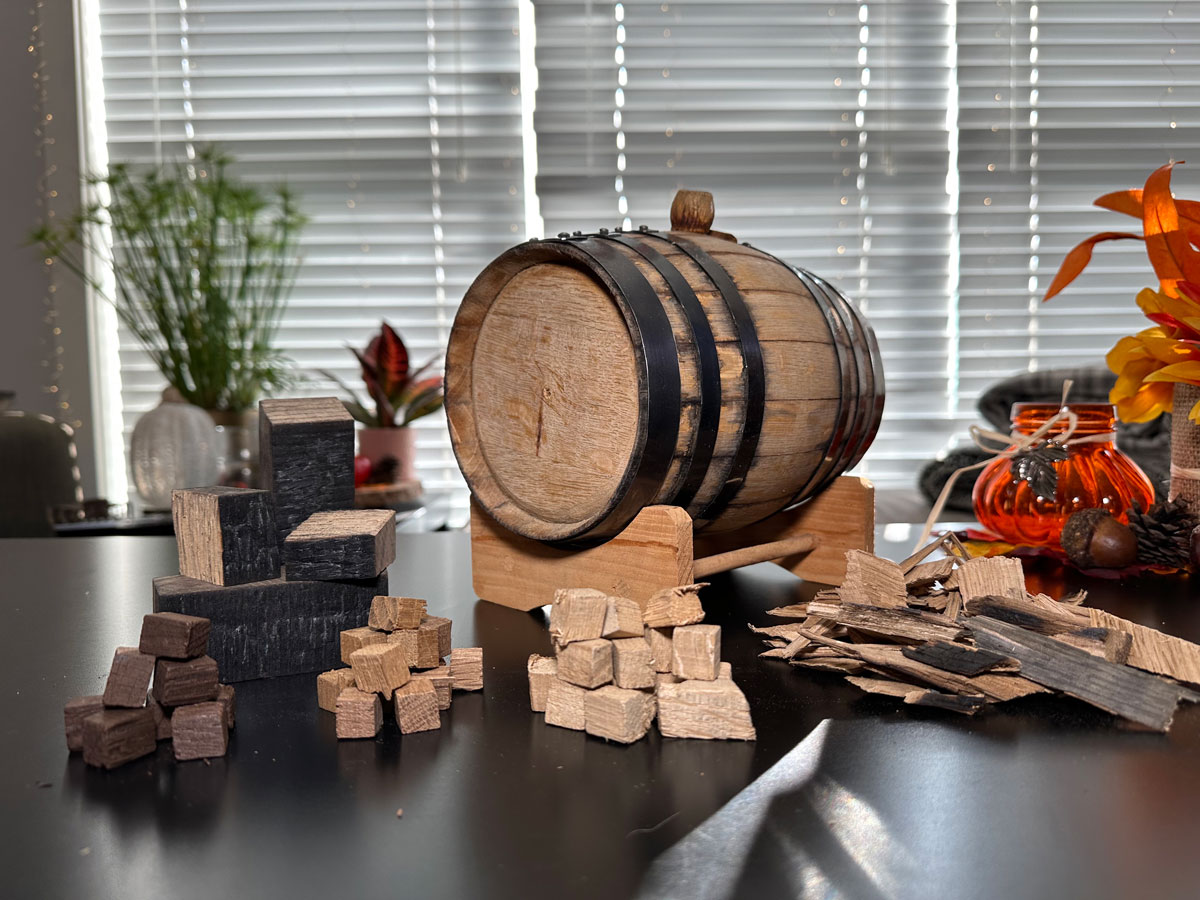
We can do this at home with small barrels and unaged or shortly aged spirits, but today we’ll be aging cocktails—specifically, spirit-forward libations. This takes anywhere from a few days to a few weeks depending on personal preference. No barrel? No problem! You can find an array of different untreated woods like cherry, pear, apple and hickory in barbecue smoker chip and other formats. Some spirit companies even sell oak chips from their whisky barrels.
As with spirits, a barrel-aged cocktail becomes a fuller and deeper version of the original. It’s a more immersive flavour experience, if you will. A Negroni, for example, sees the bitterness become softer, the vermouth warmer and the gin more complex with woodsy layers over its dry, botanical profile.
Once your desired flavour experience is achieved, simply transfer the cocktail to sealable containers and store in the fridge. Making an unaged version to compare side by side with your experiment is a fun way to enjoy the fruits of your (and your barrel’s) labours.
For any questions or additional tips, please reach out to @m.benevoli on Instagram.
How to barrel-age cocktails at home
1. If you are using a barrel, you will need to prep it a day or two before you use it. Place it in a sink or bin (to catch any leaks or drips) and fill it with warm water. Check and top it up periodically until barrel no longer leaks; then it is ready for your cocktail. (If the barrel continues to leak, you can patch it with a bit of melted beeswax.)
2. Build your cocktail without any dilution.
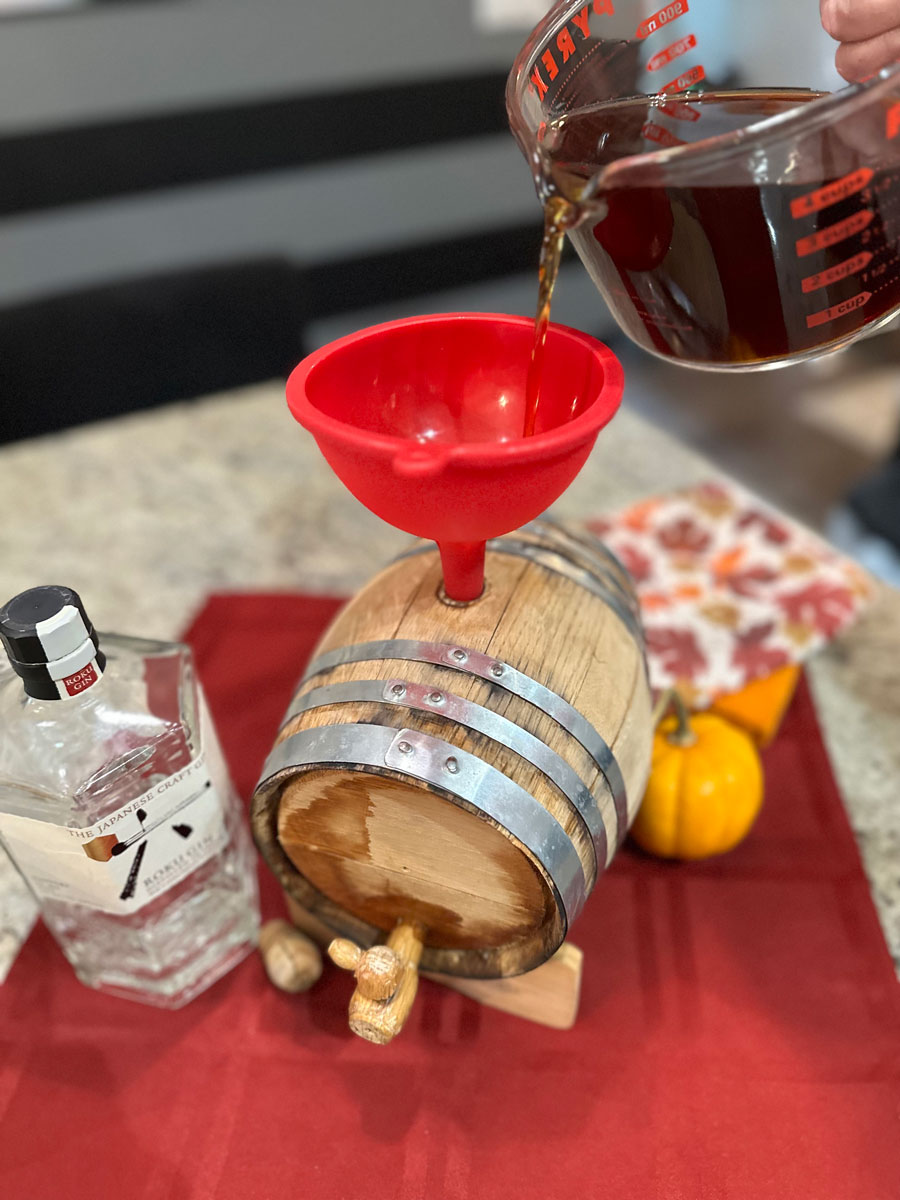
3. Transfer to the prepared barrel if you are using one. If not, transfer to a sealable container and add the wood of your choice.
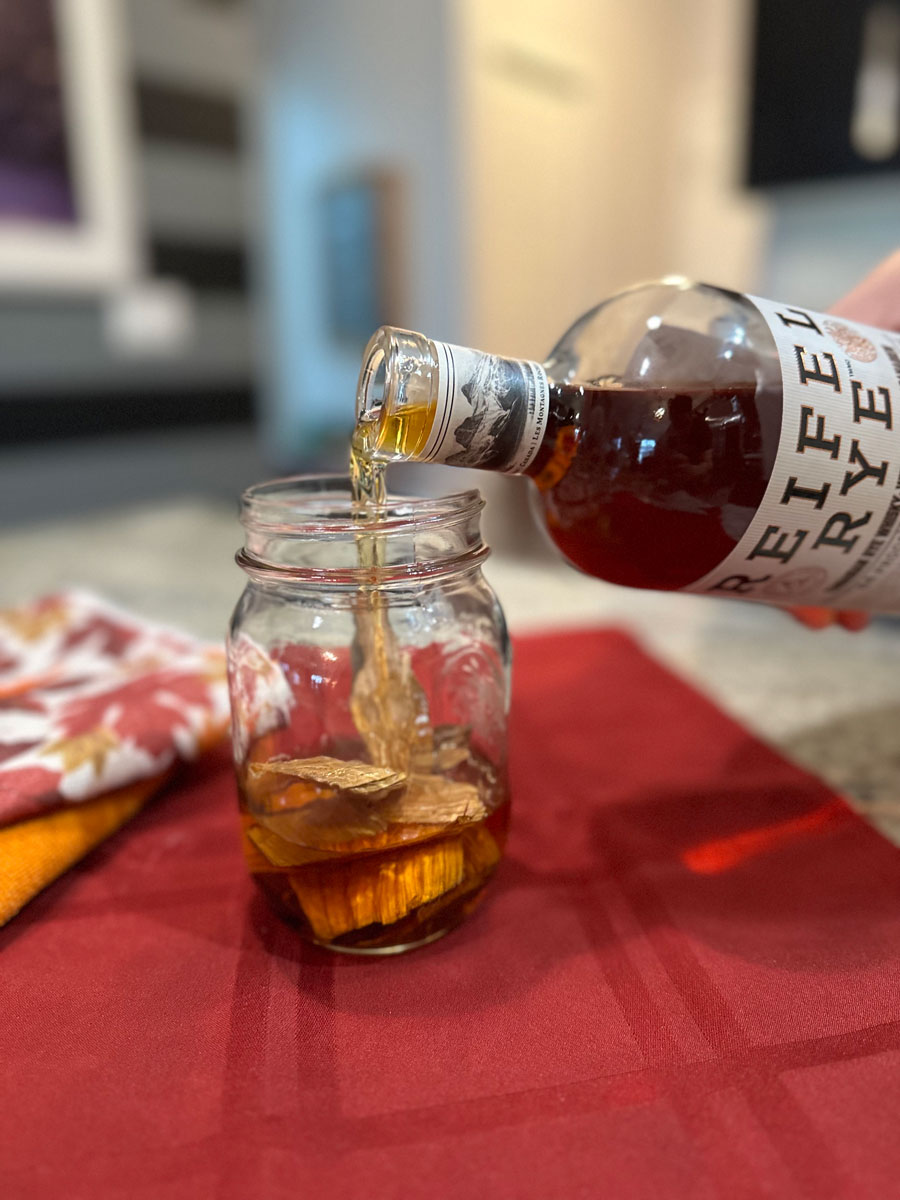
4. Store in a cool, dark place away from direct sunlight.
5. You may shake, move or roll your aging vessel to promote additional interaction once a day if desired. This is optional.
6. Open and taste after a few days; see if it needs more time. For a first batch, aging will generally take five to 35 days; subsequent barrels will be much shorter.
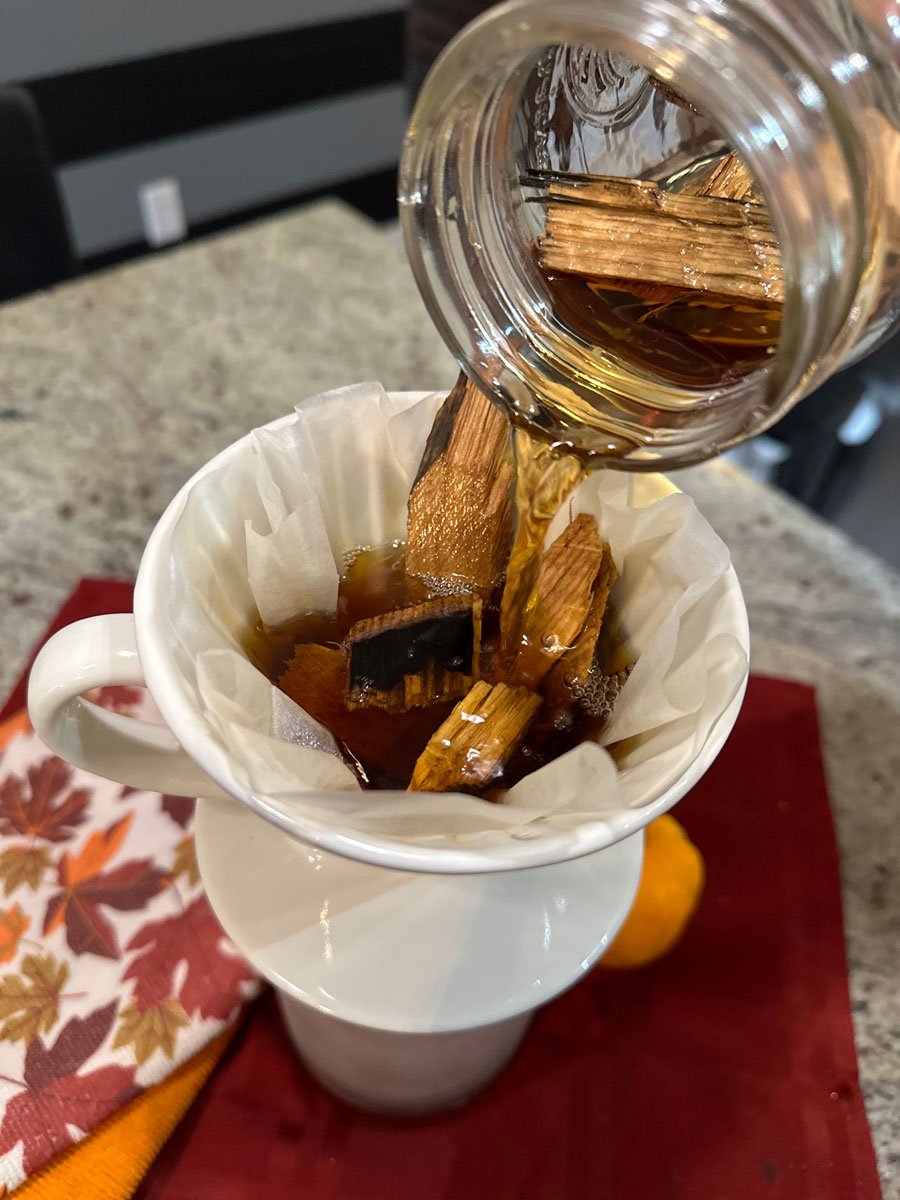
7. Once it has come to your desired taste, strain the cocktail through a few layers of cheesecloth or coffee filter to remove any chips or debris, then transfer it to a sealable container.
8. Store in fridge up to six months, but taste frequently to check quality.
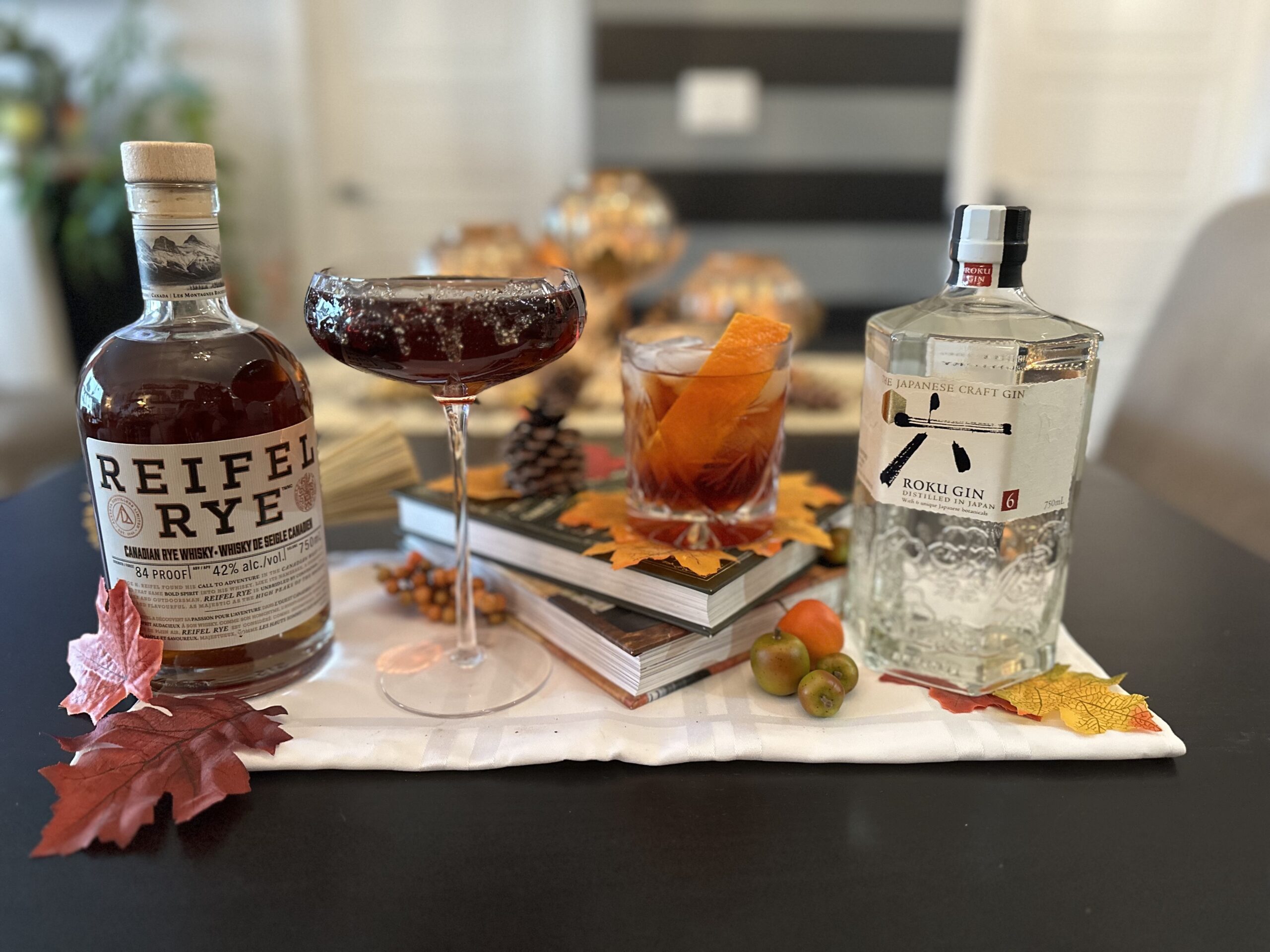
TIPS
• The ideal barrels for aging cocktails are lightly charred American oak casks that are one to three litres in size, with two litres being optimum.
• Even a well-sealed barrel will still lose some liquid to the angel’s share—count on about 10 per cent loss.
• Between batches, keep the barrel full of liquid to prevent it becoming leaky.
• The barrel will retain the flavour of whatever has been stored in it, so plan to always use it for the same drink.
• If you are using staves or chips instead of a barrel, plan on using 5 or 6 smallish chunks of charred wood or 2 to 3 Tbsp of chips per litre of liquid in a non-reactive vessel such as a large mason jar.
• Use only untreated and food-safe wood.
• Never put anything perishable in the aging barrel or jar.
• In general, stick to liqueurs for sweetener—honey will crystallize and simple syrup can begin to ferment.
• Go light on the bitters—they can become very intense with aging. You can always top up the bitters when you serve the cocktail.
Make these barrel-aged cocktails at home:
Barrel-aged Negroni
Barrel-aged General Waverly
—by Matthew Benevoli


